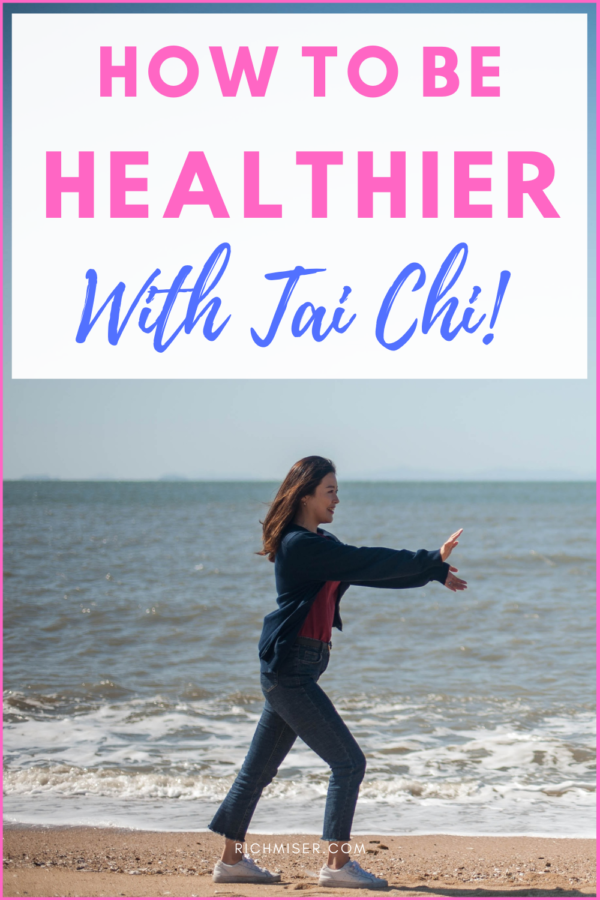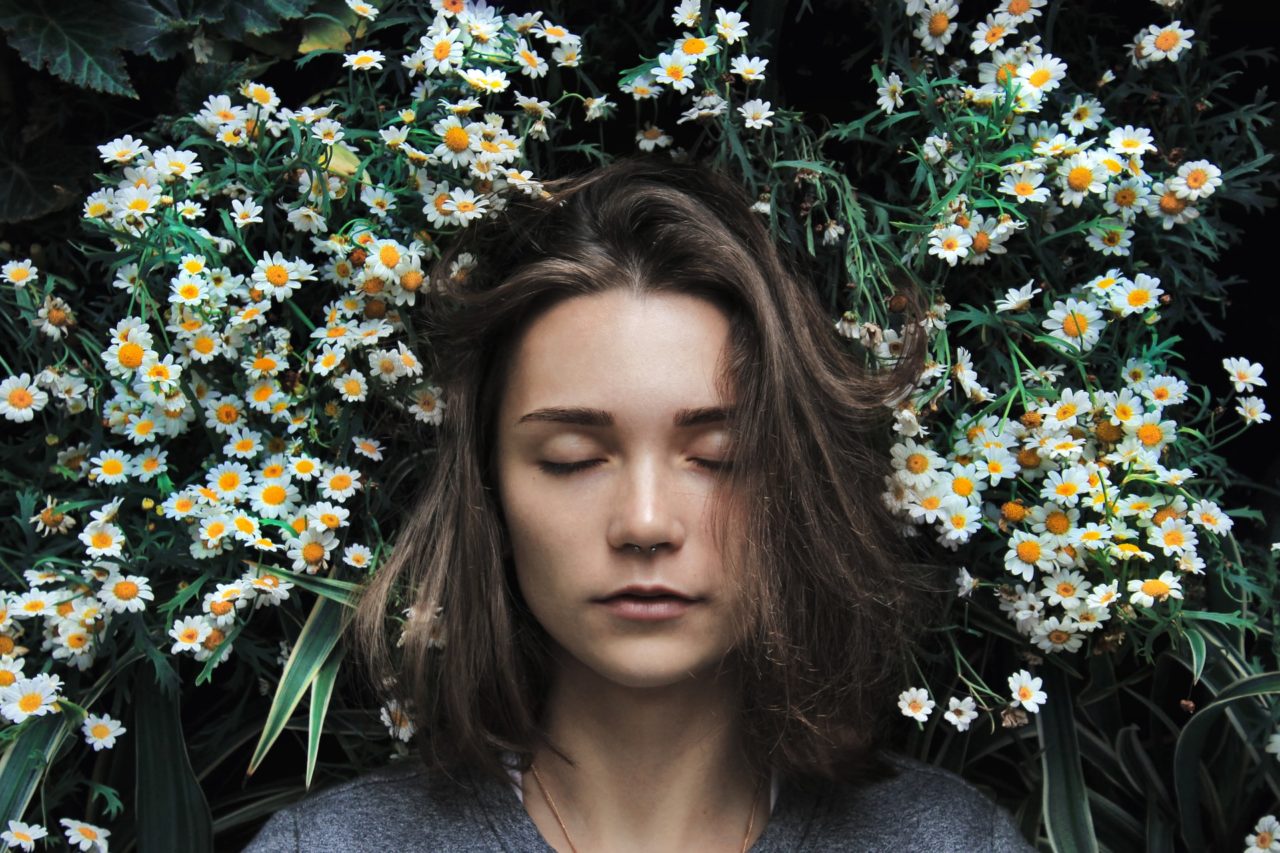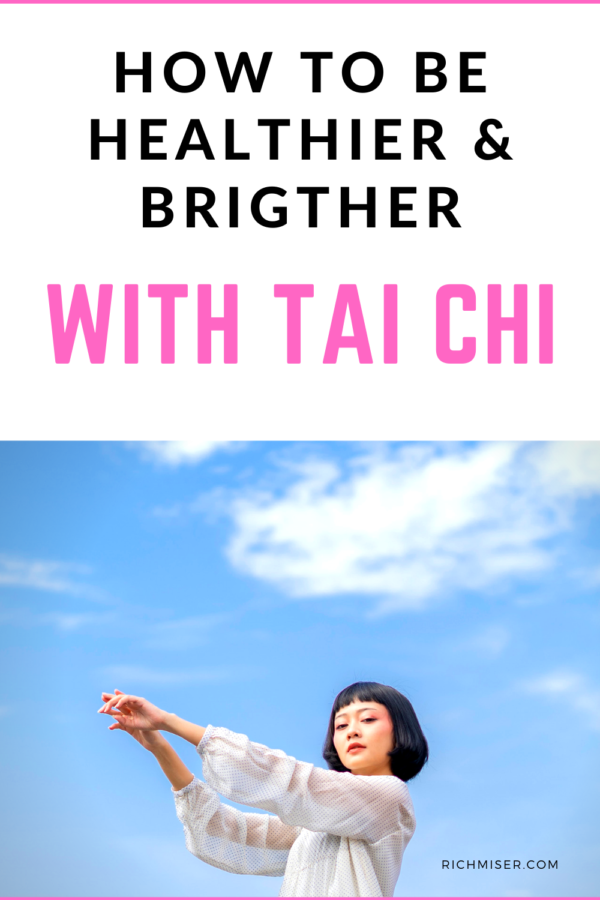I never thought I’d find myself a Tai Chi fanatic. But yes, it is true. I do it every single day, first thing in the morning – and it’s made a dramatic and positive impact in my life.
And that’s what inspired me to come up with this article. As I can personally say, this martial art has made me calmer, more energetic, slimmer, and fitter. And in case you’re wondering, I’m in my 30s.
So forget about the stereotype of Chinese septuagenarians in a park; this is for everyone. Let’s check it out.
How to Be Healthier & Brighter with Tai Chi
What Is Tai Chi?
Tai Chi is a traditional Chinese martial art form made to embrace the mind, body, and spirit. It’s practiced for defense training, meditation, and health benefits. This martial art can mean different things for different people. Some use Tai Chi to practice self-defense while most of us (I would think) take it up for the health benefits (more on that below).
The study of Tai Chi primarily involves the following three aspects:
Health
People who aren’t comfortable with exercises may find it hard to practice Tai Chi at first, though a regular practice will increase strength and stamina. The health training focuses on reducing the effects of stress on the body and mind.
Meditation
Tai Chi cultivates focus and calmness, which helps you to maintain optimum health. From personal experience, I can say that it absolutely calms you down, since it’s like “meditation in movement” (similar to yoga). Plus, it gives you energy.
Because of this, it’s my first activity every day, even though I generally dislike morning exercise. But this is “soft” enough that I actually like it!
Martial Art
I use the term “martial art” loosely because, while Tai Chi is technically a martial art, I don’t really consider it useful for self-defense.
In Tai Chi, every posture flows into the next without any pause, ensuring that your body remains in constant motion. It combines the likes of deep breathing, relaxation, and flowing movements to attain the inner power of healing and wellness. In immediate terms, it feels like both an energizing and calming exercise.
The Tai Chi art form believes in feeling the internal energy, or qi, and converting it to internal force, or jing, for generating more and more energy. And then that energy can be used to heal the mind and body to achieve fitness, agility, balance, control, strength, and mobility.
Can Tai Chi Help You Lose Weight?
According to one study, people who practiced for 45 minutes five times a week for 12 weeks lost weight without changing other aspects of their lifestyle. However, it’s important to note that the progress of weight loss in Tai Chi will be slow and steady. On average, a 45 to 60 minutes session burns up to a maximum of 300 calories.
Pairing up a lower-calorie diet with Tai Chi and practicing it regularly will surely result in weight loss. So, if you are looking forward to losing that extra fat, this is a way forward.
Alternatively, you can combine it with other forms of exercise and a good diet. Personally, I do it for just 5-10 minutes a day, but combine that with walking and regular strength training.
Health Benefits of Tai Chi
“When you practice Tai Chi, you are focusing on deep breathing while calming your mind and performing the specific movements.” – Dawn Addison
Let’s look at the health benefits in detail.
Mental Health Benefits
Reduce Stress and Anxiety
Tai Chi helps to reduce stress and anxiety. According to research, it provides similar benefits for stress and anxiety as traditional exercise. As a matter of fact, some note that it offers superior stress management as compared to regular exercise because it’s based on meditation and focused breathing.
If you are experiencing stress and anxiety, this can help you to break the pattern. Tai Chi is accessible to all, and it’s safe and inexpensive as compared to other forms of exercise and training routines.
Stabilize Your Mood
Are you feeling depressed or anxious? Practicing Tai Chi will help to manage those peaks and valleys. Slow, mindful breaths and movements positively affect the nervous system and mood-regulating hormones in our body.
Tai Chi helps you to stabilize your mood and feel happy again with relatively little effort. Since it is based on mindful breathing and moving, you can make the most of its beginner-friendly routines to alleviate your more negative moods.
Improve Your Brain Function
More than five million Americans are living with Alzheimer’s disease. With growing age, you can begin to experience cognitive impairment. But Tai Chi can help you and others improve cognitive function.
By practicing it, many older people have seen drastic improvements in memory and executive functioning skills. From rebuilding focus to carrying out complex tasks, it has helped many adults fight cognitive impairment. If you or your loved ones are getting older, Tai Chi is a way forward to improve overall cognitive and memory functions.
Speaking for myself, and though I’m in my 30s, I can say that my practice has helped improve my brain function via its mood-stabilizing and energy-increasing benefits. When I’m mentally calmer but at the same time more energetic, I think more clearly. The scattered thoughts of an anxious mind are much reduced.
Improve Quality of Life for People with Parkinson’s
According to one experiment, the regular practice of Tai Chi led to a decreased number of falls in people who had Parkinson’s. Indeed, Tai Chi can significantly help people who are suffering from Parkinson’s disease to increase their leg strength and overall balance.
Another study published in the Brazilian Journal of Medical and Biological Research has shown that Tai Chi has slowed down the progression of Parkinson’s. People with mild to moderate Parkinson’s disease can use it to help fight off the progression of the condition.
Sleep Better
According to a 2016 study, people with cognitive impairment who practiced Tai Chi slept better. In another study, young adults who were facing anxiety were asked to take two classes per week. The result was that they experienced significant improvements in their sleep quality.
So, Tai Chi has the potential to help you sleep better. And when your sleep quality improves, you’ll be able to make the most of your day with a more balanced mood, while feeling prepared to take on your responsibilities and tasks.
Reduces Symptoms of Fibromyalgia
Fibromyalgia is a disorder that affects muscles, mood, sleep, and memory. In a 2018 study, people who practiced Tai Chi for 52 weeks showed significant improvement in Fibromyalgia-related symptoms. People who were practicing aerobics to fight off Fibromyalgia-related symptoms didn’t report any drastic improvement.
Physical Health Benefits
Assists in Weight Loss
Like we reviewed, Tai Chi can help you to cut down your weight.
According to one study, people who practiced Tai Chi five times a week for 45 minutes saw a decrease in their weight after the 12th week. Although weight loss with Tai Chi is a slow and steady process, you can pair up a healthy diet with it to make the process faster.
An average one-hour session of Tai Chi has the potential to burn up to 300 calories. But note that this statement doesn’t appy to every person as we all have different bodies.
Reduces the Risk of Falling in Older People
Tai Chi has proved to be a catalyst for improving balance and motor function amongst older adults. Moreover, it also reduces the fear of falling.
If you or your loved ones are advancing in age, Tai Chi practice can cut down both the risk and fear of falling. Furthermore, it also helps older people be more independent and live a quality life.
Improves Heart Efficiency
According to a review of 20 studies, Tai Chi has shown a positive impact on the heart’s efficiency. It helps to reduce blood pressure, resting heart rate, and enhances stroke outcome. The same review also showed respiratory-system improvements.
If you have any circulatory issues like high blood pressure, you can practice Tai Chi to counter it with or without depending on expensive medicines and challenging exercises. Although of course, always discuss your options with your doctor before starting anything new.
Reduces Arthritis Pain
A study of 40 people with knee osteoarthritis who practiced this martial art two times a week for 12 weeks reported improvement in mobility and life quality. Another study reported less pain and a boost in mobility, where participants with rheumatoid arthritis practiced Tai Chi for 12 weeks.
Compared to physical therapy, one study concluded that Tai Chi was more effective in the treatment of knee osteoarthritis. It can help you to improve your mobility and reduce arthritis pain. You just need to practice it regularly for 12 weeks to see a considerable difference in your quality of life.
Increases Bone Density
A study found that people who regularly participate in Tai Chi practice sessions for at least 24 weeks will see an increase in their bone density. Indeed, 45-90 min sessions between two to seven times per week for 24 weeks can slow down any reduction in bone density. And especially for patients with osteoporosis, it has proved to be very effective.
Is Tai Chi Safe to Practice in a Casual Atmosphere?
Tai Chi requires focus and attention. That’s why it should only be practiced under safe conditions. Here’s what a good environment looks like:
- The place where you are practicing must have good lighting and a comfortable temperature.
- The surface shouldn’t be slippery, and there should be no obstacles laying around.
- You should be hydrated and not feeling ill.
- The environment must promote self-competition rather than competing with others or trying to meet other people’s standards.
- The atmosphere or environment must be distraction-free as Tai Chi is all about connecting to your mind and body and generating internal energy, which requires your full focus and attention.
Styles and Variations of Tai Chi
There are five major styles or variations: Chen, Yang, Wu, Sun, and Hao. They each have their own distinct characteristics in movement and purpose.
Chen
Back in the 17th century, a family named Chen in the Chen village in the Henan province of China was practicing its own martial art form. The unique form became the Chen family style of Tai Chi.
It’s one of the oldest forms out of the five. Chen style is known for its stubborn movements like kicks, jumps, and strikes. This style provides a great cardio workout but requires the practitioner to be athletic and physically strong.
Yang
Founded by Yang Lu-ch’an, the Yang style is the most practiced and popular. It boosts flexibility by making use of exaggerated movements that are performed slowly and gracefully. This style works for almost everyone as it’s easy and doesn’t require elevated levels of athleticism.
Here’s what it looks like at a very high level:
Wu
Next in line is the Wu Style; it’s the second most popular. The founder of Yang style trained Wu Ch’uan-yu, who was the founder of Wu style. This kind emphasizes a medium stance and small compact movements. Moreover, it rotates around the concept of extending the body by leaning forward and backward.
Sun
Founder of Sun style, Sun Lutang, was an expert in xingyiquan and baguazhang before she started studying Tai Chi. While creating the Sun style, she combined various methods from baguazhang and xingyiquan. This style focuses on unique footwork and gentle, circular hand movements.
Hao
Hao is the least popular style. It greatly focuses on cultivating internal qi or energy. As an advanced discipline, it’s only recommended for experienced practitioners.
How to Start
You can always start with an in-person or virtual class. However, I started with a 5-minutes-a-day YouTube series and am loving it. Here’s the first video:
Summing It Up
I can’t recommend it enough. In fact, I actually started by trying Yoga, which seems far more popular in the West. But for some reason, Yoga was painful to me (it made my neck hurt), and I didn’t like how you were on the floor almost the whole time.
In contrast, I find Tai Chi smooth and relatively painless, but still challenging and revitalizing. Give it a try!
Have you tried Tai Chi? Would you?







Miguel, excellent. I am going to try it to keep improving, life’s never ending goal!